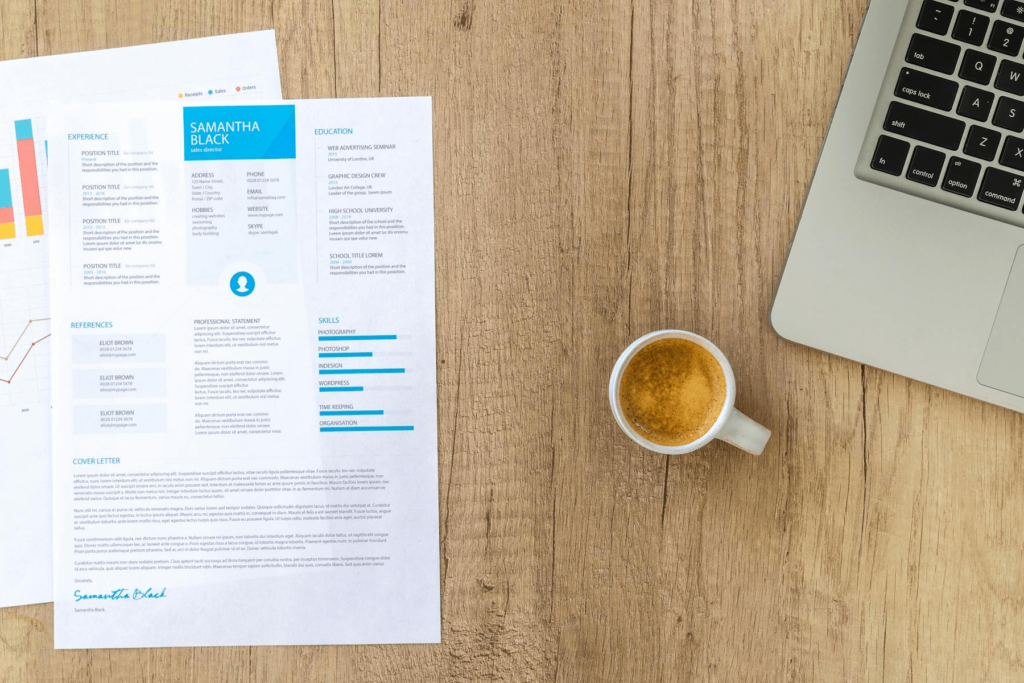During a job hunt, resume formatting is an art. And job seekers who know how to format their resumes as per different job roles are true artists. If you have formatted your resume systematically, it will automatically make you secure the job. On the other hand, potential employers will be impressed by your resume. But don’t confuse a simple and professional resume with an overstuffed resume.
Are you applying for an entry-level position? Are you switching careers? Or are you aiming for a specialized role? With the help of the proper resume format, you can easily get noticed by the employer. This resume formatting guide will walk you through the different types of resume formats, help you choose the best one for your career goals, and provide tips for making your resume ATS-friendly.
Understanding the Different Types of Resume Formats
There are three primary resume formats to choose from, and each has its own strengths and weaknesses. The correct format depends on your work history, career goals, and the type of job you are applying for.
Chronological, Functional, and Combination Resumes Explained
- Chronological Resume: This is the most used resume format in resume crafting, where you list your work experience in reverse chronological order. This format is the ultimate choice for recent graduates to senior-level candidates. It simply means your resume begins with your most recent job to the oldest job. This type of resume highlights your work history and career progression. Thus, a chronological resume is ideal for those with a consistent work history.
- Pros: Shows a clear career trajectory; makes it easy for employers to see growth and promotions.
- Cons: Not ideal for those with employment gaps or frequent job changes.
- Best for: Job seekers with a solid, continuous work history in the same industry.
- Functional Resume: Are you wondering what the difference between a functional and chronological resume is? The functional resume pays more attention to skills and qualifications than chronological work history. This format is helpful for those with employment gaps, who are changing careers, or who have limited work experience.
- Pros: Highlights skills and abilities; minimizes focus on employment gaps.
- Cons: It can make recruiters skeptical about the lack of work history details.
- Best for: Career changers, recent graduates, and those with employment gaps.
- Combination Resume: Want to know the best thing about a combination resume? It is a blend of both chronological and functional formats. It starts with a skills section and ends with a detailed work history in reverse chronological order. This format helps candidates to give more attention to skills.
- Pros: Balances skills and work experience; shows both qualifications and job history.
- Cons: It can be longer and difficult to format.
- Best for: Those candidates with a strong set of skills and solid work experience looking to showcase both.
How to Choose the Best Resume Format for Your Job Search
Did you know that picking a suitable resume format for a job hunt relies on several factors, such as career stage, industry, and job goals?
Here’s how to do it:
- If You Have a Stable Work History: Candidates in this category can opt for a chronological resume. This technique will clearly show their achievements and progression.
- If You’re Changing Careers or Have Employment Gaps: Use a functional resume to emphasize skills relevant to your new career.
- If You Have a Mix of Relevant Skills and Work Experience: Choose a combination resume. This will allow you to present your skills upfront while still detailing your work history.
Tailoring your resume format to your career situation helps you present your qualifications in the best form and increases your chances of securing the job.
Formatting Tips for an ATS-Friendly Resume
Applicant Tracking Systems (ATS) have become essential tools for employers. Your resume may not reach a hiring manager if it isn’t formatted correctly. Here’s how to make your resume ATS-friendly.
Using Clear Headings and Simple Formatting for ATS
ATS software scans resumes for keywords and information but cannot function well with complicated formatting. Follow these tips to ensure your resume passes ATS screening:
- Use Standard Section Headings: Stick with common yet simple headings like “Work Experience,” “Skills,” “Education,” etc. Avoid using creative or unusual terms that the ATS might not recognize.
- Choose Simple Fonts: Use fonts like Arial, Calibri, or Times New Roman. Avoid using decorative font, as it may not be readable by ATS.
- Avoid Tables, Columns, and Graphics. While these can make a resume visually appealing, they do not work well with an ATS. Use simple bullet points instead.
- Save Your File in the Correct Format: Some ATS systems struggle with PDF files, so it’s safer to submit your resume in a .doc or .docx format unless otherwise specified.
Following these formatting guidelines ensures that the ATS can properly scan your resume. Ultimately, it will increase the likelihood that a recruiter will see it.
Avoiding Common Formatting Mistakes That Can Hurt Your Chances
Most candidates must be aware of common resume formatting mistakes such as keyword stuffing, adding unwanted pictures, etc. These things can make even a well-written resume less effective.
Here’s what to avoid:
- Using Unconventional Layouts: Stick to traditional layouts, as ATS software is designed to read standard formats.
- Including Excessive Visual Elements: Images, logos, and charts may look great to a human but are usually unreadable for ATS.
- Overloading Your Resume with Keywords: While it’s essential to include keywords from the job description, overstuffing your resume with them can make it seem unnatural. Use keywords strategically in relevant sections.
- Using Uncommon File Formats: Stick to .doc, .docx, or .pdf (if specified) to avoid formatting issues.
Avoid the above mistakes at all costs and increase your chance of securing the job role.
FAQs
What’s the best resume format for my job application?
The best resume format depends on your work history and career goals. Use a chronological resume if you have a stable work history, a functional resume if you have employment gaps or are changing careers, and a combination resume if you want to highlight both skills and experience.
How do I choose between a chronological, functional, and combination resume?
Consider your career situation. If you have consistent work experience, a chronological format is ideal. If you have gaps or are making a career change, a functional format will emphasize your skills. If you have a mix of skills and experience, a combination resume can showcase both.
What formatting tips should I follow for ATS?
Use simple fonts and standard section headings. Furthermore, avoid tables, columns, and graphics. And always save your resume as .docx file or a .doc, and use keywords from the job description without overstuffing.
Can a wrong format affect my chances of landing a job?
Yes, using an inappropriate resume format can make it difficult for recruiters to find the information they need. It may also cause problems with ATS screening, leading to your resume being rejected before it reaches a human recruiter.
How can I make sure my resume passes through ATS screening?
Use standard resume sections, simple formatting, and relevant keywords. Avoid graphics, tables, or unconventional fonts, and save your file in a format that ATS can read (e.g., .doc or .docx). Stick to a traditional format and make your content clear and concise.
What are the most common resume formatting mistakes to avoid?
Here are some common mistakes candidates should avoid:
- adding unwanted visual elements.
- not running an ATS scan or writing a resume as per ATS.
- using fonts that do not fit the job standards.
Summing Up
Thank you for staying with us till the end. By now, you know resume formatting is a main ingredient for job applications. In this article, we shared different resume formats: chronological, functional, and combination. So now you can get your dream job once you know how, when, and where to use these formats. You also need to pay attention to:
- use the format that aligns with your career goals.
- use the correct formatting tips.
- make your resume ATS-friendly.
- customize your resume as per the job application.
And voila! You will have a shining resume ready to impress the employer.










